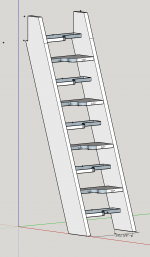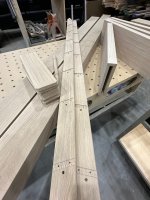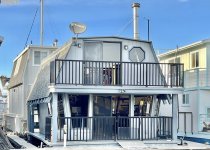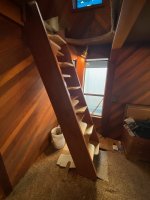rmhinden
Member
I am working on designing and building an Alternating Tread Space Saving Stair for my daughter's new house. The current design looks like this:
[attachimg=1]
The stair treads will be either 1" or 1 1/2" thick. My question is how to join the stair treads to the risers (2" x 12"). I have been thinking of either dominos (10mm or 12mm) or mortices (w/ screws).
Any thoughts on this? Pro and cons of each approach?
Bob
[attachimg=1]
The stair treads will be either 1" or 1 1/2" thick. My question is how to join the stair treads to the risers (2" x 12"). I have been thinking of either dominos (10mm or 12mm) or mortices (w/ screws).
Any thoughts on this? Pro and cons of each approach?
Bob







